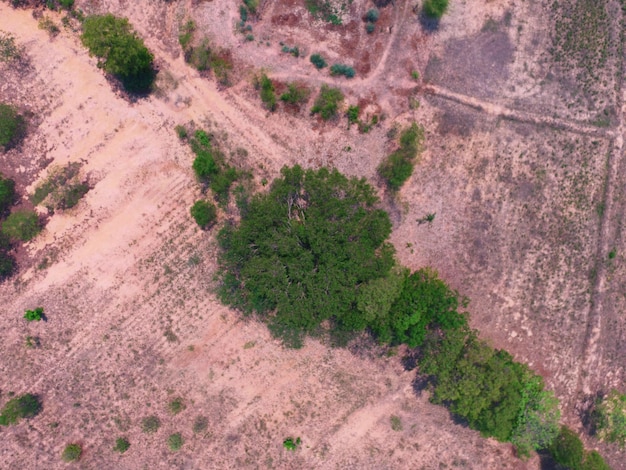US Diplomatic Strategies to Combat the Global Food Crisis

The US employs a range of diplomatic strategies—including financial aid, multilateral partnerships, and policy advocacy—to address the root causes and immediate impacts of the global food crisis.
The **diplomatic strategies the US is employing to address the current global food crisis** are multifaceted, ranging from providing immediate aid to tackling the underlying causes of food insecurity. This article examines these strategies, exploring how the US navigates complex international relations to ensure global food stability.
Understanding the Global Food Crisis: A US Foreign Policy Challenge
The global food crisis is not merely a humanitarian issue; it’s a significant foreign policy challenge that demands a multi-pronged approach. The US recognizes that food security is intertwined with national security and global stability.
Addressing this crisis requires understanding the root causes and employing effective diplomatic strategies.
The Interconnection Between Food Security and National Security
Food security is directly linked to national security. When populations lack access to adequate food, it can lead to social unrest, political instability, and even conflict. The US understands that a hungry world is a less stable world, and instability anywhere ultimately affects US interests.
- The US actively works to prevent famines, as these can trigger mass migrations and humanitarian disasters.
- Investing in agricultural development in vulnerable regions helps build resilience and reduce dependence on aid.
- Promoting sustainable food systems is crucial for long-term stability and preventing future crises.
Diplomatic Efforts to Address Root Causes
Diplomacy plays a crucial role in addressing the root causes of the food crisis. This involves negotiating trade agreements, advocating for policy reforms, and fostering international cooperation.

By working with other nations, the US can leverage its influence to promote policies that support food security.
In conclusion, the global food crisis is a complex issue with significant implications for US foreign policy. Addressing the root causes through diplomatic efforts is essential for ensuring long-term global stability.
Financial Aid and Humanitarian Assistance
One immediate and direct **diplomatic strategy the US is employing to address the current global food crisis** is the provision of financial aid and humanitarian assistance. This aid serves as a lifeline for populations facing severe food shortages.
The US is one of the largest donors of food aid worldwide.
The Role of USAID in Food Security
The United States Agency for International Development (USAID) plays a central role in the US government’s efforts to combat global hunger and food insecurity. USAID’s programs are designed to provide both immediate relief and long-term solutions.
- USAID provides emergency food assistance to populations affected by conflict, natural disasters, and economic shocks.
- The agency invests in agricultural development programs that increase crop yields and improve farming practices.
- USAID supports programs that improve nutrition, especially for women and children.
Bilateral Agreements and Partnerships
The US often provides financial aid through bilateral agreements with other countries. These agreements allow for targeted assistance and ensure that the aid reaches those who need it most.
Partnerships with local organizations are crucial for effective aid delivery, ensuring that resources are used efficiently and sustainably.
In summary, financial aid and humanitarian assistance are crucial components of the US’s diplomatic strategy to alleviate the immediate suffering caused by the global food crisis. These efforts are coordinated through USAID and often involve bilateral agreements and partnerships with local organizations.
Multilateral Partnerships and International Organizations
Addressing the global food crisis requires collaboration on a global scale, and multilateral partnerships are an essential diplomatic tool. The US works with international organizations to leverage collective resources and expertise.
These partnerships allow for a more coordinated and effective response to the crisis.
Working with the United Nations
The United Nations plays a central role in coordinating international efforts to combat hunger. The US actively participates in UN programs aimed at food security, such as the World Food Programme (WFP) and the Food and Agriculture Organization (FAO).
- The WFP provides food assistance to millions of people worldwide, and the US is one of its largest donors.
- The FAO works to improve agricultural productivity and food security, and the US supports its research and development initiatives.
- The US also collaborates with other UN agencies to address related issues such as water scarcity and climate change.
Collaboration with the G7 and G20
The US works with other major economies through the G7 and G20 to mobilize resources and coordinate policies to address the food crisis. These forums provide opportunities for high-level discussions and commitments.

Collaboration with these international bodies amplifies the impact of US efforts and promotes a more unified global response.
In conclusion, multilateral partnerships with organizations like the UN, G7, and G20 are integral to the US’s diplomatic strategy to combat the global food crisis. These partnerships enable a more coordinated, effective, and sustainable response to global hunger.
Policy Advocacy and Promoting Sustainable Agriculture
Beyond providing aid, the US **diplomatic strategy the US is employing to address the current global food crisis** involves actively advocating for policy reforms and promoting sustainable agricultural practices globally.
This approach aims to create lasting solutions to food insecurity.
Advocating for Open Trade Policies
The US promotes open trade policies that allow for the free flow of agricultural goods. These policies can help to ensure that food is available where it is needed most and at affordable prices.
However, trade policies must be carefully designed to avoid disrupting local markets and harming small farmers.
Supporting Climate-Smart Agriculture
The food crisis is exacerbated by climate change so supporting climate-smart agriculture is crucial for long-term food security. This involves promoting farming practices that reduce greenhouse gas emissions and adapt to changing climate conditions by promoting innovative agricultural projects to improve the efficiency of agriculture and animal welfare.
- Promoting drought-resistant crops and water-efficient irrigation systems.
- Encouraging the use of renewable energy in agriculture.
- Supporting research and development of climate-resilient farming practices.
By advocating for policy reforms and promoting sustainable agriculture, the US aims to create lasting solutions to food insecurity that benefit both people and the planet.
Addressing Conflict and Instability
Conflict and instability are major drivers of food insecurity, and the US recognizes the need to address these underlying issues. The **diplomatic strategy the US is employing to address the current global food crisis** include conflict prevention and resolution efforts.
These efforts are critical for creating stable environments where food systems can thrive.
Supporting Peacebuilding Initiatives
The US supports peacebuilding initiatives in conflict-affected regions, working to resolve disputes and prevent future violence. These initiatives can help to create the conditions necessary for food production and distribution.
Mediation efforts and diplomatic interventions can help to de-escalate conflicts and prevent humanitarian crises.
Strengthening Governance and Rule of Law
Weak governance and lack of rule of law can also contribute to food insecurity. The US supports programs that strengthen governance institutions and promote the rule of law, including investing in education programs for future generations.
These efforts can help to create more stable and equitable societies where food security is prioritized.
In conclusion, addressing conflict and instability is a crucial component of the US’s diplomatic strategy to combat the global food crisis. By supporting peacebuilding initiatives and strengthening governance, the US aims to create more stable and resilient food systems.
Challenges and Future Directions
While the US has made significant efforts to address the global food crisis with the employment of **diplomatic strategies the US is employing to address the current global food crisis**, significant challenges remain. Understanding these challenges is crucial for charting future directions.
Adaptation and innovation can make these processes even more efficient in the future.
Geopolitical Obstacles to Effective Diplomacy
Geopolitical tensions and competing interests can hinder diplomatic efforts to address the food crisis. Complex political landscapes can make it difficult to negotiate agreements and implement effective programs.
- The US must navigate complex relationships with other countries that may have different priorities.
- Coordination among international organizations can be challenging due to bureaucratic processes and conflicting mandates.
- Political instability and corruption in some countries can undermine aid efforts and prevent resources from reaching those who need them most.
Future Directions for US Diplomacy
To overcome these challenges, the US must continue to adapt its diplomatic strategies and prioritize long-term solutions. This includes:
Investing in research and development of climate-resilient crops and sustainable farming practices.
Strengthening partnerships with local organizations and communities to ensure that aid is effective and sustainable.
By addressing these challenges and charting new directions, the US can continue to play a leading role in combating global hunger and promoting food security.
| Key Point | Brief Description |
|---|---|
| 🌍 Global Food Crisis | US uses diplomacy to address factors like conflict, climate change and poverty. |
| 💰 Financial Aid | USAID provides assistance, partners with countries for targeted support. |
| 🤝 Multilateral Partnerships | US collaborates with UN, G7/G20 for effective global response. |
| 🌱 Policy Advocacy | Promotes open trade, sustainable agriculture for lasting solutions. |
Frequently Asked Questions (FAQ)
▼
The global food crisis is driven by factors such as climate change, conflict, economic shocks, and supply chain disruptions. These elements interact to create food insecurity in various regions of the world. Understanding these drivers is essential for crafting effective strategies.
▼
The US provides financial aid through agencies like USAID, offering emergency food assistance and investing in agricultural development. Bilateral agreements with countries help ensure aid reaches those in need. These funds support programs that aim to reduce hunger and malnutrition.
▼
Multilateral partnerships, such as those with the UN, G7, and G20, enable the US to leverage collective resources to address the food crisis. These partnerships foster coordinated responses and amplify the impact of individual efforts for global impact.
▼
Policy advocacy is crucial because it promotes open trade and sustainable agriculture. These actions lead to policies that can create lasting solutions to food insecurity. Advocating for the right policies helps build resilient food systems.
▼
Conflict and instability disrupt food production and distribution, exacerbating food insecurity. The US addresses these issues by supporting peacebuilding initiatives and strengthening governance. These interventions help create stable environments for food systems to develop.
Conclusion
In summary, the US employs a diverse array of diplomatic strategies to address the global food crisis, including financial aid, multilateral partnerships, policy advocacy, and conflict resolution efforts. While challenges remain, continued adaptation and innovation are essential for charting future directions and ensuring global food security.





